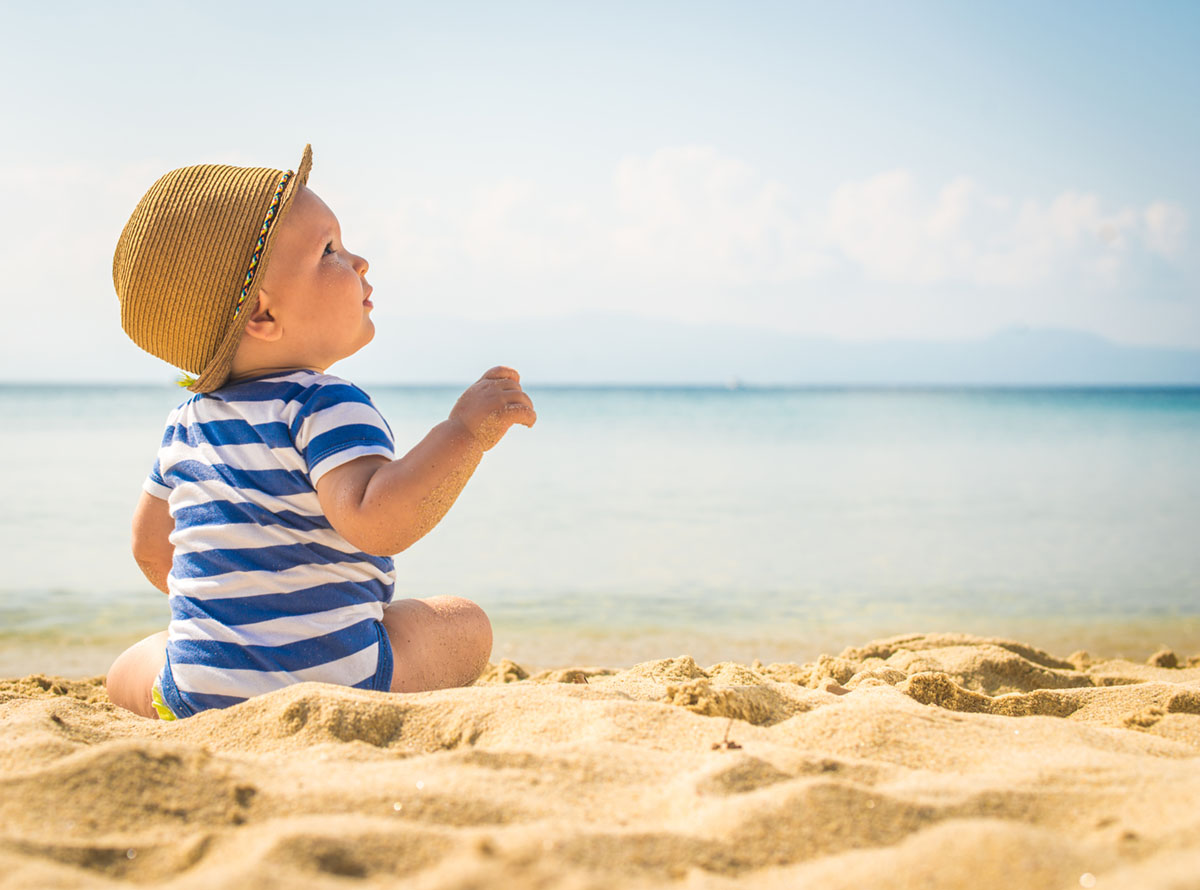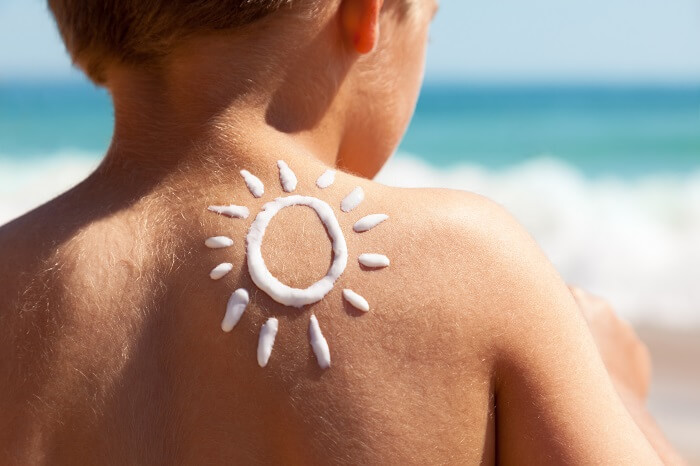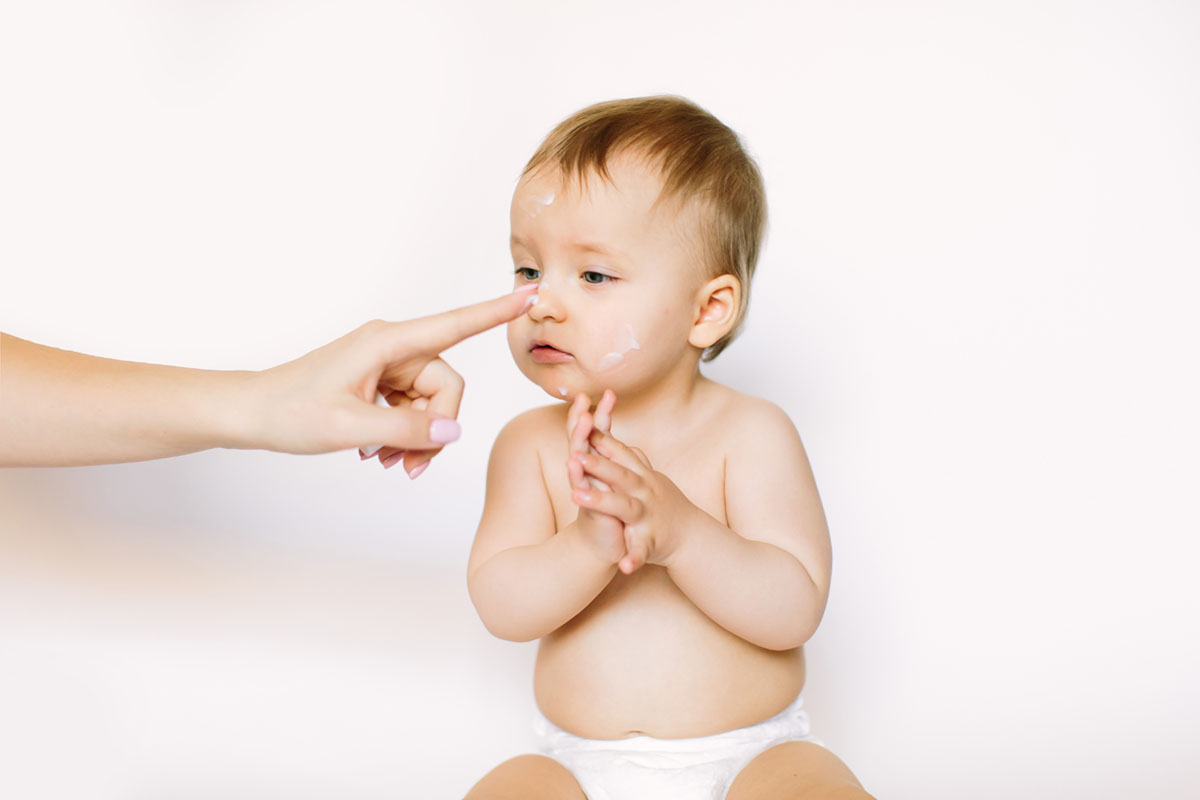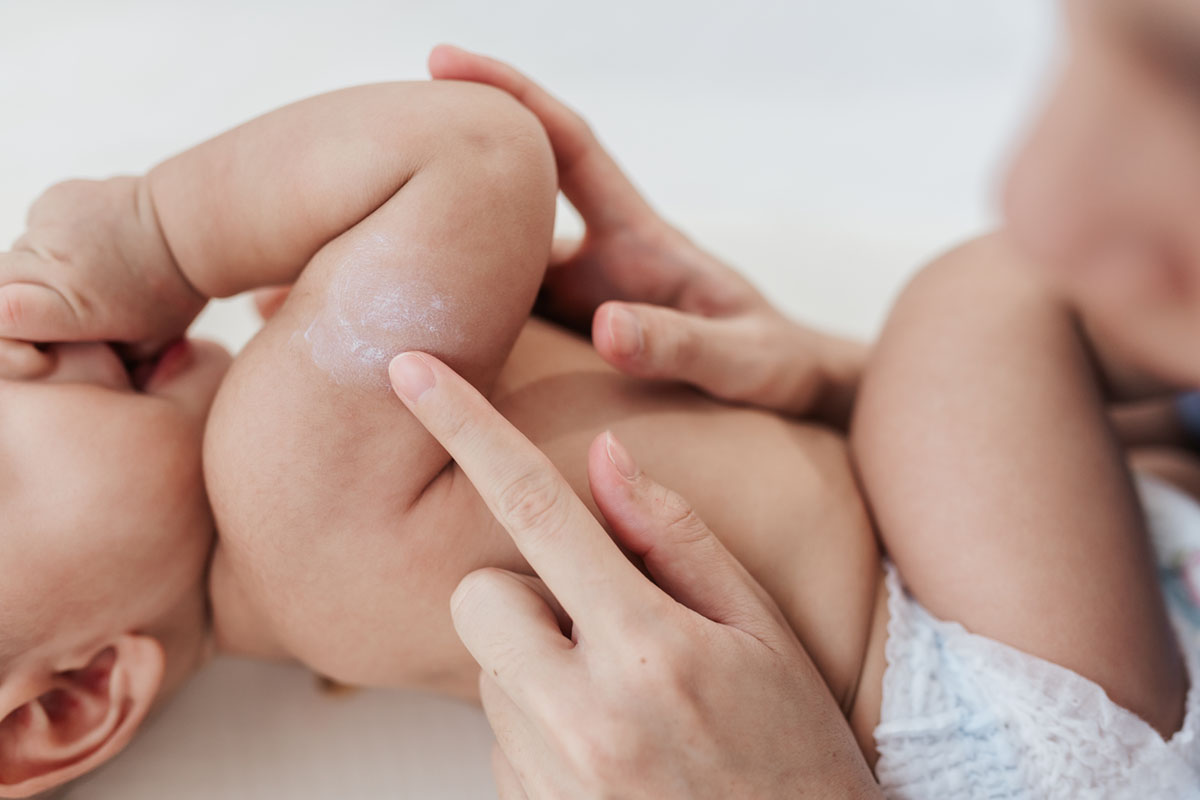Sun Protection for Babies and Children
Tips for Protecting Sensitive Children's and Baby Skin
For many children, summer is probably the most wonderful time of the year: There are school holidays, great weather awaits, and perhaps even exciting vacations with the family. Even the smallest ones enjoy digging in the sand or splashing in the water. Many parents underestimate a nearly invisible risk – the aggressive UV radiation from the sun.
While many adults seek a summery tan, sun protection should be the focus for children and babies. Here you will find tips on how to best protect the little ones from the sun, what to look for when choosing sun cream for children, and what to do in case of sunburn and heatstroke in children.
Babies and Sun
Why Shouldn’t Babies Be Exposed to the Sun?
Sunlight consists of infrared radiation and ultraviolet radiation (UV):
- Infrared radiation provides the pleasant warmth we feel on our skin and is also used in the form of infrared lamps for medical purposes.
- UV radiation penetrates deep into the skin and is initially not noticeable. However, its effects are more prolonged and significantly more severe. Unprotected contact with UV radiation can lead to sunburn and promote premature skin ageing as well as the development of skin cancer.
The skin of adults is not defenseless against UV radiation. As a natural defense mechanism, melanin is produced in adult skin – a body's own pigment that tans the skin and protects it to a certain degree from sunburn.
However, in babies and toddlers, melanin production is not yet fully developed. Thus, the body's own sun protection is absent. Furthermore, the skin of babies is about five times thinner than that of adults. For these reasons, children's skin tends to sustain burns much more quickly than adult skin – five to ten minutes in the sun can already be enough!
Therefore, your little treasure is doubly at risk: Sunburn in children does not manifest as slight redness but immediately as a severe burn. Moreover, every sunburn increases the risk of developing skin cancer later in life. And those who experience sunburn as a child multiply their risk for the disease later on.
When Can Babies Be Exposed to the Sun?
In the first year of life, babies should be kept entirely away from direct sunlight. In the warm, sunny seasons, you should avoid the midday sun between 11 am and 3 pm with your child. If possible, ensure that your baby is indoors or in another cool, shady place during this time. Set up sun umbrellas or sails outdoors. However, make sure that heat does not build up under the shade provider. Walks or playdates outdoors should preferably take place in the morning or evening hours when the sunlight is not as intense.
Children over one year of age can – with appropriate precautions – stay in the sun. To avoid heatstroke or sunburn, you should continue to avoid the midday sun on hot days. If your toddler wants to splash in the water, create a shady area for them. Since water reflects radiation, sunburn can occur much more quickly near bodies of water.

"Babies and toddlers should never be exposed to direct sunlight without protection. Primarily, you should protect the little ones from the sun by especially avoiding the midday sun and preventing direct contact with sunlight through clothing and staying in the shade. On very hot days, you can protect exposed areas, such as the face and hands, with a suitable sunscreen."
Edith Janzen, Midwife at the Birthing Centre Bielefeld, Germany
How to protect babies and children from the sun
Tips on clothing, sunscreen, etc.

Clothing as Sun Protection:
Baby clothing can protect against sunlight. To ensure that the child does not get too warm even in summer, you should dress them in airy, loosely cut clothing that covers as much skin as possible. Special sun protection clothing, which is certified according to UV Standard 801, for example, does not allow UV radiation to pass through and provides reliable protection. However, densely woven cotton clothing is also well suited for summer outfits.
Since the downy hair on the baby's head is too thin to shield the scalp from the sun, they should always wear headgear. Hats with a surrounding brim, caps, or models with ear and neck protection are suitable to prevent heatstroke. Choose headgear in a light colour so that the child's head does not heat up too much underneath.
In many cases, good headgear also protects the child's eyes from the sun. In the mountains or near bodies of water, however, they may also be dazzled, which is why the additional use of sunglasses is necessary. Ensure that the glasses are CE and UV400 certified.
But the feet are also highly susceptible to sunburn. Therefore, the child should not walk barefoot but continue to wear thin socks. A positive side effect: The socks also provide slight protection against sharp stones or insect bites.

Tips for Sun Protection in the Car:
Although window glass blocks the more dangerous UVB rays, UVA rays can penetrate unhindered. They can also damage a baby's skin in the long term. Therefore, additional sun protection should be applied to the window when your baby is travelling in the car or when the sun is shining into the children's room.
Sunscreen for Babies and Children:
For children under one year, sunscreen should only be used sparingly. Since children can absorb substances, such as sun protection factors, through their skin and hardly sweat, it is advisable to avoid applying the cream to large areas. It is better to apply sun protection, specifically developed for babies and children, targeted to the skin areas that cannot be protected by clothing, such as the face and hands.
When choosing sunscreen, make sure it is suitable for children'sskin and has a high Sun Protection Factor (SPF) of at least 30 – even better is sunscreen with SPF 50. Moreover, the sun protection should not contain alcohol or be formulated as a gel, as both can dry out sensitive children's skin.
Additional Tips for Sun Protection:
Sun protection is worn away by sweating, being in the water, showering, or playing in the sand. Therefore, the cream should be reapplied at regular intervals – at least every two hours – to maintain protection. If the child has been in the water, reapply the sunscreen immediately after bathing or showering.
If your child has been in the water, dry them thoroughly so that no water droplets remain on the skin. These can act like a magnifying glass in direct sunlight and intensify the radiation's impact on the skin.
Sunstroke and Sunburn in Children
What to Do?
Unfortunately, it is not always possible to prevent the child from getting sunburned while playing in the sun. If you notice red, sore areas on your child's skin, you should cool the affected area. Place a towel soaked in cool water and wrung out on the affected area. After about 20 minutes, the application needs to be renewed. However, do not repeat the process too often to prevent the child from becoming too cold.
If the skin begins to itch, apply a soothing lotion or gel to relieve the itchiness and provide moisture to the dry skin. Refrain from using "tried and true" home remedies like quark – it can cause skin reactions in children.
Another serious consequence of the sun, which occurs independently of sunburn, is sunstroke. It manifests as nausea, vomiting, headaches, or dizziness and occurs when the child's head or neck has been exposed to warm sunlight for too long.
If your child's skin is burned over a large area, they complain of pain from the burn, or you notice signs of sunstroke, you must act immediately. Move the child out of the sun to a cool, shady place. You can lower the body temperature with drinks and cool compresses, and seek medical attention as soon as possible.
Linola Baby & Child
For baby-soft skin
Content verified by

Content verified by: Edith Janzen
Edith Janzen has been a midwife at the Birthing Centre Bielefeld in Germany since 2012 and is a mother herself. Her areas of expertise include out-of-hospital obstetrics, prenatal care, and postnatal care. She supports numerous families from the beginning of pregnancy through childbirth to the end of the postpartum period, providing advice and assistance during this special phase of life.
Additional topics & information
All about child and baby care

Moisturising Your Baby – What Matters in Baby Skin Care
To moisturise your baby or not? This question can't be answered broadly. What's certain is that baby skin is much thinner than that of adults and therefore needs special protection. Here, you'll find tips on what to consider for baby care.

Baby Care – Tips for Newborn Skin Care
Newborns have very thin skin, making it susceptible to disturbances and irritations. Learn how the right baby care can support the healthy development of the skin.

Dry Skin in Babies – Causes and Skin Care Tips
Dry baby skin is more common than you might think and is harmless in most cases. However, the dry areas can cause itching, potentially affecting the baby's comfort.





